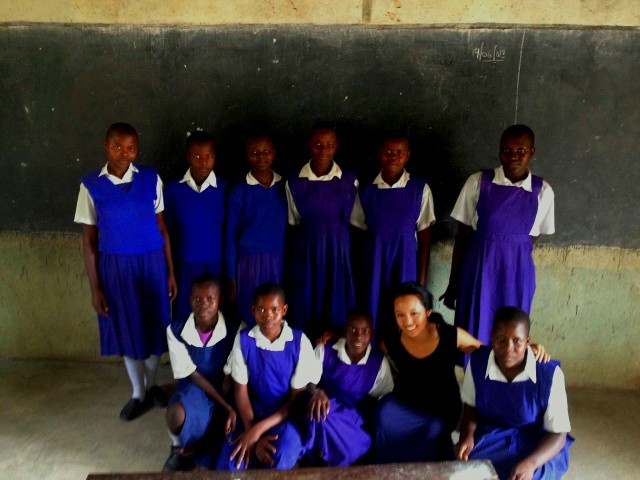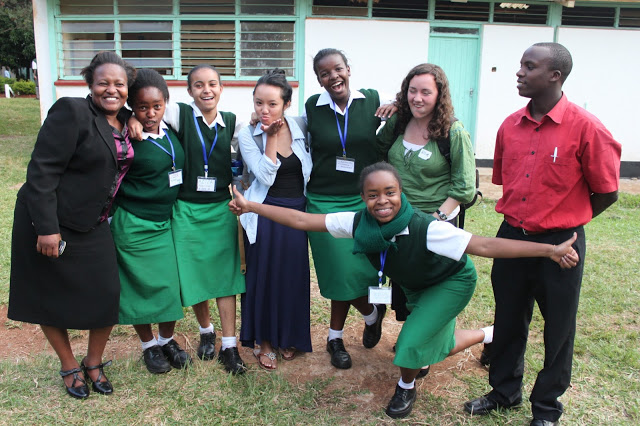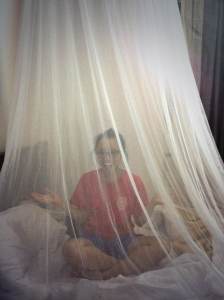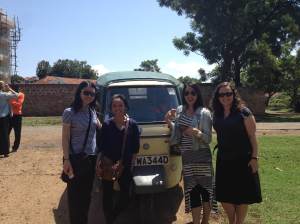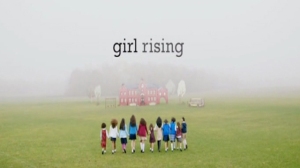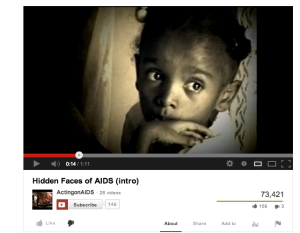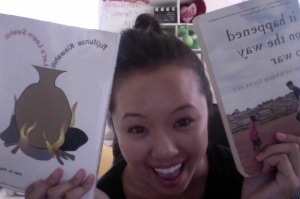Hi all!
Firstly, I apologize on the lack of updates. Internet has been spotty lately, and the program/leisure time has been extremely fun, yet time-consuming. Whether it’s rainforest hiking in the Kakamega Rainforest, mentoring amazing high school students at the first InnovateKenya conference, or enjoying the beautiful sunset on Lake Victoria, I’ve lost track of time in its most purest sense. It’s that feeling when you’re enjoying something so much, that time becomes insignificant as I indulge in every experience, encounter, and interaction, and tuk-tuk drive I have around the city. I’m thankful for the easygoing, relaxed “African time” culture. Quite a welcomed change in the pace of life.
As for any further exciting updates regarding global health, I’d like to share some updates about a project I’m implementing here with my friend Emilia!
Recently, I wrote for Ishani and Inesha’s awesome blog called seeingitoi.wordpress.com. It is about my “Lean In” Moment here in Kisumu, Kenya. Emilia and I are working for an NGO (i.e. non-profit) called SANA International, an organization that provides clean water, sanitation facilities, and hygiene education to schools and communities in the Nyanza province of western Kenya. After interacting with government officials from the Kenyan Ministry of Public Health, several school teachers, and many primary school students, we discovered that a significant issue was the lack of a comprehensive approach to addressing girls’ menstruation and health and girls’ educational outcomes. With this in mind, we initiated Project SHE, a program that partners SANA International with other NGOs in Kenya to provide Sanitation facilities, Hygiene supplies, and health Education in ~50 primary schools in western Kenya to increase school attendance and educational performance outcomes for primary school girls. Here’s a copy of the latest blog:
“Lean In Moments: Bernadette Lim” (featured on seeingitoi.wordpress.com)
Project SHE: Innovating girls’ health and education in western Kenya
Martha has high hopes to become a doctor. Trisha proudly exclaimed that she wanted to be a pilot, and Mary knew that she wanted to be a teacher like her mother. As the four of us began to share our future aspirations in one of my recent visits to Kibono Primary School, Trisha said something that deeply struck me: She didn’t know if she could become a doctor because she missed so much school.
One of the greatest highlights of my trip to Kisumu, Kenya has been working, with SANA International (Sustainable Aid in Africa), an organization that provides clean water, sanitation facilities, and hygiene education to local communities and primary schools in the Nyanza province of western Kenya. As one of its current projects, SANA partnered with UNICEF to build more latrines (toilets) and washrooms for girls in primary schools. According to a 2013 UNICEF study, if girls had these sanitation facilities available to them, they would be more likely to attend school, especially during their menstruation period. Coinciding nicely with my passion for girls’ empowerment through health and education, my partner and I were asked to evaluate this initiative. As a result, we have spent a lot of our time visiting primary schools and conversing with girls and teachers about their thoughts and reactions to these projects.
Our research led us to discover something intriguing. Getting girls to attend school during their menstrual period isn’t as simple as just building the facilities they need. A more effective solution should be multi-dimensional, one that includes to the reliable provision of sanitary pads and an accompanying health education curriculum centered on menstrual health. SANA addressed one facet of the problem by building the latrine facilities for girls and several NGOs operating in Kenya addressed the lack of sanitary napkins (with accompanying health education varying per organization,) Yet, despite their efforts, they had failed to coordinate to provide all of the girls with a comprehensive health solution to increase their attendance in schools.
Our solution? We initiated Project SHE: Kenya. By recognizing the need for a comprehensive solution to girls’ health in schools, we sought to lean in by talking to officials of the Kenya Ministry of Public Health, experts from SANA, teachers, and students about our idea. The mission of our project is to increase girls’ outcomes in schools by improving access to Sanitation facilities, Hygiene supplies, and health Education for primary school girls. By combining these efforts into one solution, we believe that we can deliver a more powerful intervention to increase girls’ education in Kenya’s primary schools.
Currently, we are planning to implement our plans in 50 primary schools throughout the Nyanza province in western Kenya to accompany the construction of girls’ latrines by SANA with various NGO partnerships that will provide free or affordable sanitary pads to these schools. Additionally, after reading Kenya’s National School Health Policy and discovering that menstrual health was not mentioned in its standard curriculum, we have spent time developing a curriculum to be run through established school health clubs; this curriculum will provide the information girls need to know about appropriate menstrual health management. We hope that our multi-faceted “package”— privacy and cleanliness of new latrines for girls, a reliable supply of sanitary pads, and comprehensive menstrual health education— will not only result in an increased attendance for girls but also elevate girls’ academic performance.
My partner and I are still in the developing stages of coordinating Project SHE and ensuring its success and continuity beyond the four weeks I have left here in Kisumu. In the hopes of creating a more accessible and achievable future for girls in Kenya, we hope that Project SHE will be a simple and sustainable solution that will testify to the powerful and inextricable link among health, education, and empowerment for girls everywhere.
